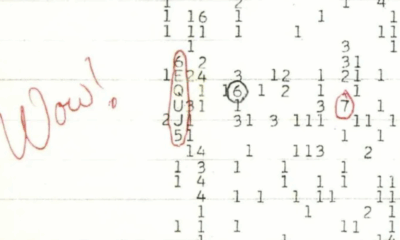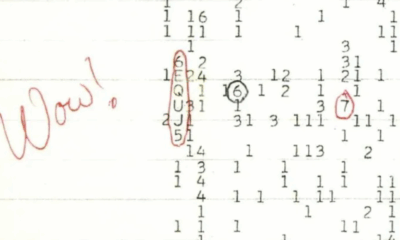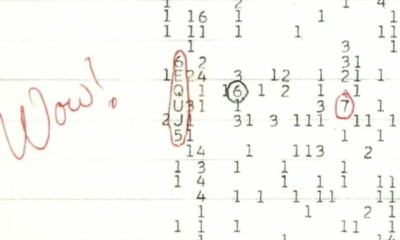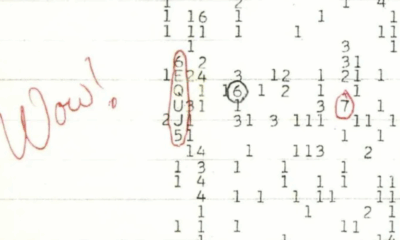Science
Scientists Unravel Mystery of 1977 Alien Radio Signal
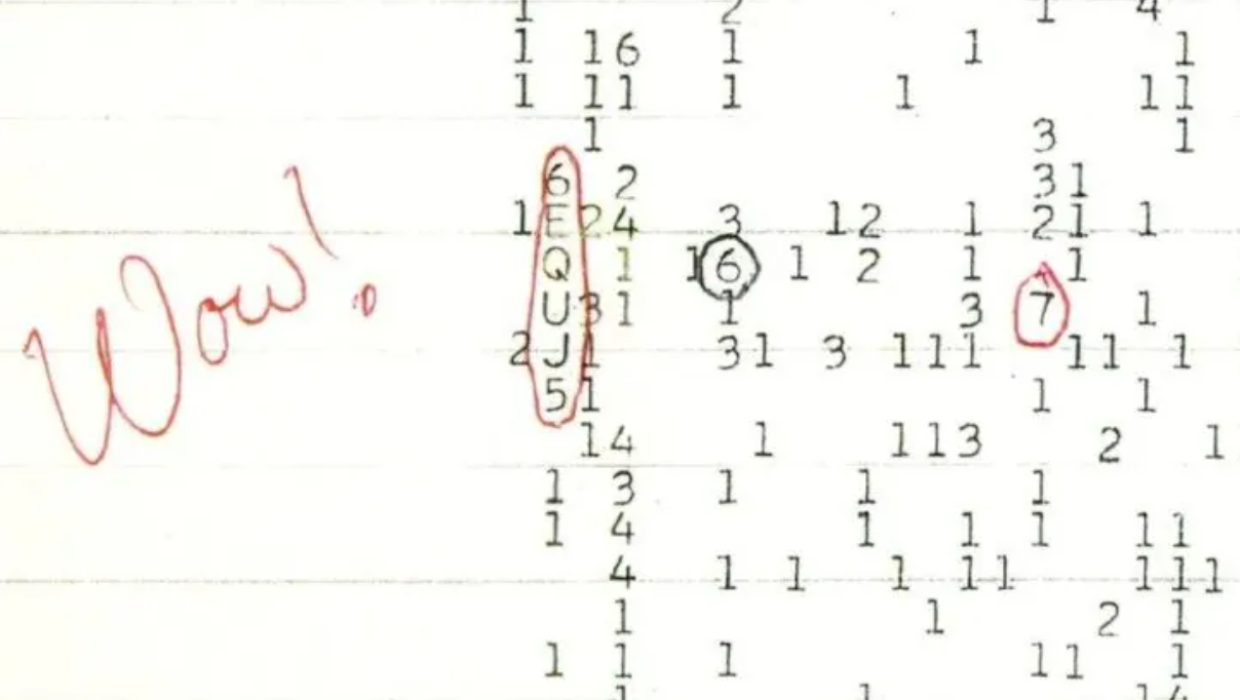
A radio signal captured in 1977, often referred to as the “Wow! signal,” has intrigued scientists for decades. Recent research suggests that this mysterious signal likely originates from a natural source rather than extraterrestrial life. The findings were announced following a detailed analysis conducted by a team of scientists at the Franklin Institute and Ohio State University.
The original signal was detected by the Big Ear radio telescope on August 15, 1977. It lasted for 72 seconds and was characterized by a frequency of approximately 2.5 GHz. Its unusual properties led astronomers to speculate about the possibility of alien communication, igniting public fascination and numerous theories over the years.
In a significant development, Dr. Anamaria Berea and her team have re-examined this iconic signal using advanced techniques. Their research indicates that the Wow! signal is likely linked to natural phenomena, specifically related to galactic cosmic rays. This revelation pushes back against decades of speculation about extraterrestrial intelligence.
Research Methodology and Findings
Dr. Berea’s team utilized modern observational tools to analyze the frequency and characteristics of the Wow! signal. The initial hypothesis suggested it could be a beacon from an alien civilization, but subsequent analysis pointed towards a more terrestrial explanation. The researchers examined the background noise of the universe and compared it with the original signal data.
Their findings suggest that the Wow! signal aligns with emissions generated by cosmic rays interacting with our atmosphere. This interaction can produce radio waves that mimic the characteristics of the original signal detected in 1977. By employing advanced algorithms and simulations, the researchers were able to demonstrate that the signal’s properties fit within the known mechanics of cosmic ray interactions.
Dr. Berea emphasized the importance of advancing scientific understanding rather than succumbing to sensationalism. “We must approach these signals with a scientific mindset,” she stated. “While it’s exciting to think about the possibilities of life beyond Earth, our findings illustrate the need for rigorous investigation.”
Impact on the Search for Extraterrestrial Life
The analysis of the Wow! signal contributes to a broader understanding of how we interpret signals from space. As scientists continue to explore the cosmos, the criteria for identifying potential signs of extraterrestrial life must be refined. This research reinforces the idea that not all unusual signals are indicative of intelligent life; many may have natural explanations grounded in astrophysics.
The implications of these findings extend to future research initiatives. As technology improves, the ability to detect and analyze signals from deep space will enhance our understanding of the universe. The scientific community remains committed to investigating the mysteries of the cosmos, with the Wow! signal serving as a case study in the importance of skepticism and thorough investigation.
In summary, while the Wow! signal has captivated imaginations for over four decades, recent research suggests that it is likely a product of natural phenomena rather than evidence of extraterrestrial communication. The ongoing quest for understanding the universe will continue, guided by scientific rigor and a commitment to uncovering the truths hidden within the stars.
-

 Sports1 month ago
Sports1 month agoNetball New Zealand Stands Down Dame Noeline Taurua for Series
-

 Entertainment1 month ago
Entertainment1 month agoTributes Pour In for Lachlan Rofe, Reality Star, Dead at 47
-

 Sports1 month ago
Sports1 month agoSilver Ferns Legend Laura Langman Criticizes Team’s Attitude
-

 Entertainment2 months ago
Entertainment2 months agoKhloe Kardashian Embraces Innovative Stem Cell Therapy in Mexico
-

 Sports2 months ago
Sports2 months agoGaël Monfils Set to Defend ASB Classic Title in January 2026
-

 World3 months ago
World3 months agoPolice Arrest Multiple Individuals During Funeral for Zain Taikato-Fox
-

 Politics2 weeks ago
Politics2 weeks agoNetball NZ Calls for Respect Amid Dame Taurua’s Standoff
-

 Entertainment3 weeks ago
Entertainment3 weeks agoTyson Fury’s Daughter Venezuela Gets Engaged at Birthday Bash
-

 Sports3 weeks ago
Sports3 weeks agoHeather McMahan Steps Down as Ryder Cup Host After Controversy
-

 Entertainment7 days ago
Entertainment7 days agoNew ‘Maverick’ Chaser Joins Beat the Chasers Season Finale
-

 Entertainment3 weeks ago
Entertainment3 weeks agoTyson Fury’s Daughter Venezuela Gets Engaged at Birthday Bash
-

 World2 weeks ago
World2 weeks agoNew Zealand Firefighters Plan Strike on October 17 Over Pay Disputes

